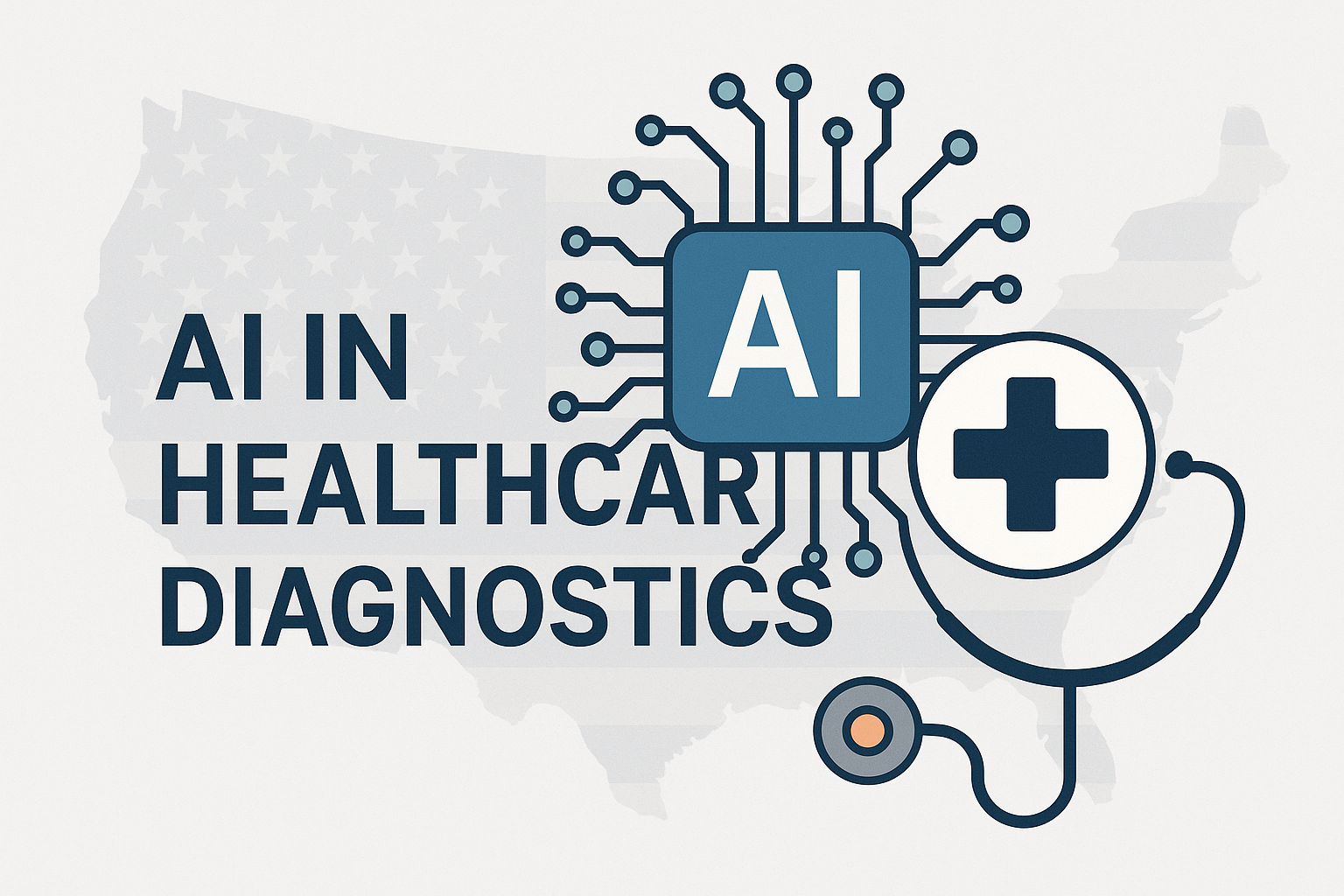
AI in Healthcare Diagnostics: Transforming Medical Detection in 2025
Artificial Intelligence (AI) is revolutionizing the healthcare industry, especially in the field of diagnostics. As we move into 2025, AI in healthcare diagnostics is not just a futuristic concept—it’s a present-day reality reshaping how medical professionals detect, diagnose, and treat diseases across the United States. This comprehensive guide explores the latest advancements, benefits, challenges, and the top AI diagnostic tools making waves in U.S. healthcare.
The Rise of AI in Healthcare Diagnostics: An Overview
AI-driven diagnostics leverage machine learning, deep learning, and natural language processing to analyze complex medical data. These technologies empower clinicians to make faster, more accurate diagnoses, ultimately improving patient outcomes and reducing healthcare costs.
What is AI in Healthcare Diagnostics?
AI in healthcare diagnostics refers to the use of advanced algorithms and computational models to interpret medical data—such as images, lab results, and patient histories—to assist or automate the diagnostic process.
TIP: AI doesn’t replace doctors; it augments their capabilities, enabling earlier and more precise detection of diseases. 🏥
How AI is Revolutionizing Medical Diagnostics in the U.S.
Enhanced Accuracy and Speed
AI systems can process vast amounts of data in seconds, identifying patterns and anomalies that might be missed by the human eye. This leads to:
- Faster diagnosis times ⏱️
- Reduced human error ❌
- Improved detection of rare or complex conditions 🧬
Key Areas Where AI Excels
- Radiology: AI algorithms analyze X-rays, MRIs, and CT scans for signs of cancer, fractures, and other abnormalities.
- Pathology: Automated image analysis helps detect cancerous cells in biopsy samples.
- Cardiology: AI interprets ECGs and predicts heart disease risks.
- Ophthalmology: AI screens for diabetic retinopathy and glaucoma in retinal images.
- Genomics: AI identifies genetic mutations linked to hereditary diseases.
Top 10 AI Tools for Healthcare Diagnostics in 2025
The U.S. healthcare market is flooded with innovative AI diagnostic tools. Here are the top 10, ranked by their impact, adoption, and technological advancement:
- IBM Watson Health
- Google Health AI
- PathAI
- Aidoc
- Tempus
- Butterfly Network
- Caption Health
- Viz.ai
- Arterys
- IDx-DR
Side-by-Side Comparison Table
| Rank | AI Tool | Primary Use Case | Key Strength | FDA Approved? | U.S. Adoption Level |
|---|---|---|---|---|---|
| 1 | IBM Watson Health | Oncology, Genomics | Data integration | ✅ | High |
| 2 | Google Health AI | Imaging, EHR analysis | Deep learning accuracy | ✅ | High |
| 3 | PathAI | Pathology slide review | Cancer detection | ✅ | Growing |
| 4 | Aidoc | Radiology imaging | Real-time triage | ✅ | High |
| 5 | Tempus | Genomics, Oncology | Personalized medicine | ✅ | Moderate |
| 6 | Butterfly Network | Ultrasound diagnostics | Portable devices | ✅ | Growing |
| 7 | Caption Health | Cardiac ultrasound | AI-guided imaging | ✅ | Moderate |
| 8 | Viz.ai | Stroke detection | Workflow integration | ✅ | High |
| 9 | Arterys | Cardiac & lung imaging | Cloud-based analysis | ✅ | Moderate |
| 10 | IDx-DR | Diabetic retinopathy | Autonomous screening | ✅ | Growing |
Benefits of AI in Healthcare Diagnostics for U.S. Patients and Providers
Improved Patient Outcomes
- Early Detection: AI identifies diseases at earlier stages, improving survival rates.
- Personalized Treatment: Algorithms tailor recommendations based on individual patient data.
- Reduced Wait Times: Automated analysis speeds up the diagnostic process.
Cost Savings
- Fewer Unnecessary Tests: AI reduces redundant procedures by providing precise diagnostics.
- Optimized Resource Allocation: Hospitals can better manage staff and equipment.
Enhanced Access to Care
- Rural and Underserved Areas: AI-powered telemedicine brings expert diagnostics to remote locations.
- 24/7 Availability: AI tools can operate continuously, providing round-the-clock support.
TIP: AI diagnostic tools are especially valuable in areas with physician shortages, helping bridge the healthcare gap in rural America. 🌄
Challenges and Limitations of AI in Healthcare Diagnostics
Despite its promise, AI in healthcare diagnostics faces several hurdles:
Data Privacy and Security
- Sensitive Information: Patient data must be protected from breaches.
- Regulatory Compliance: Adhering to HIPAA and other U.S. regulations is essential.
Algorithm Bias and Transparency
- Bias Risks: AI trained on non-diverse datasets may produce skewed results.
- Explainability: Clinicians need to understand how AI reaches its conclusions.
Integration with Existing Systems
- Workflow Disruption: Adapting to new AI tools requires training and changes in routine.
- Interoperability: Ensuring AI systems work seamlessly with EHRs and hospital IT infrastructure.
The Future of AI in Healthcare Diagnostics: Trends for 2025 and Beyond
Expanding Use Cases
- Multi-modal Diagnostics: Combining imaging, genomics, and clinical data for holistic analysis.
- Predictive Analytics: Forecasting disease outbreaks and patient deterioration.
Regulatory Advances
- Faster FDA Approvals: Streamlined pathways for AI-based diagnostic tools.
- Standardization: Development of industry-wide best practices.
Patient Empowerment
- Direct-to-Consumer AI Tools: Apps and devices enabling patients to self-screen for common conditions.
- Increased Health Literacy: AI-powered platforms educating patients about their health.
Conclusion
AI in healthcare diagnostics is fundamentally transforming the landscape of medical detection in the United States. In 2025, AI-powered tools are enhancing accuracy, speeding up diagnoses, and making expert-level care accessible to more Americans than ever before. From radiology to genomics, these technologies are empowering clinicians and patients alike, driving better outcomes and greater efficiency.
However, challenges remain—particularly around data privacy, algorithmic bias, and integration with existing systems. As the industry continues to innovate, addressing these issues will be crucial to unlocking the full potential of AI in healthcare diagnostics.
In summary, the adoption of AI in healthcare diagnostics is not just a technological upgrade—it’s a paradigm shift that promises earlier detection, personalized care, and a more equitable healthcare system for all Americans. As we look to the future, embracing these advancements will be key to building a healthier, smarter nation. ✅